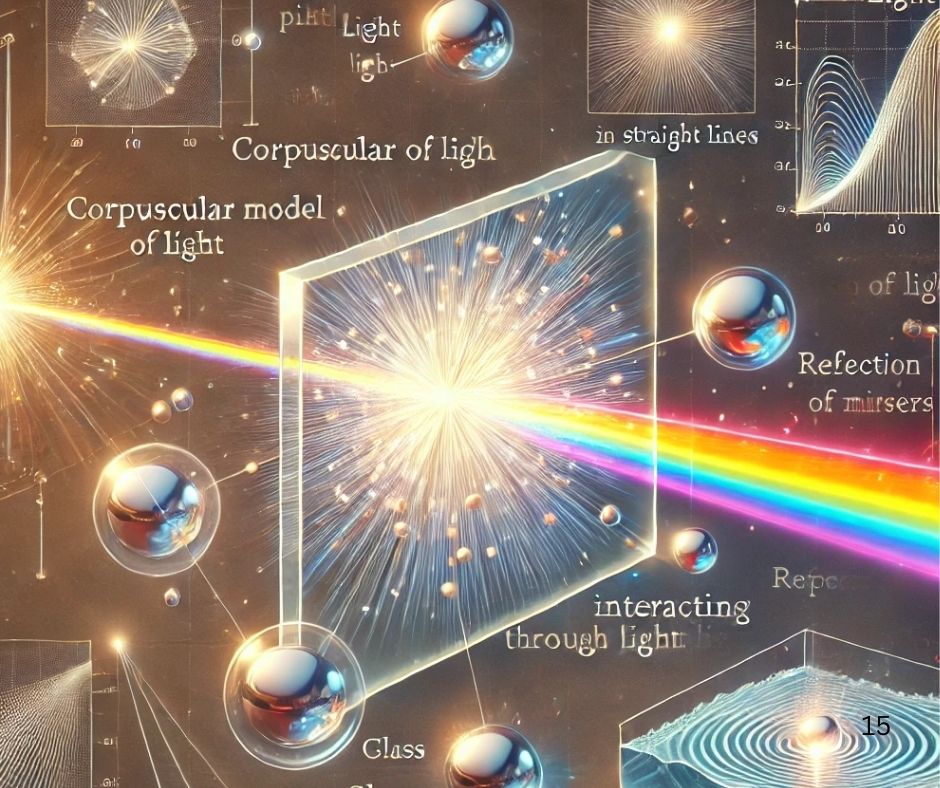Newton’s extensive experimental work and theoretical studies on light often overshadow his fundamental contribution to mathematics, mechanics and gravity. He made pioneering contribution in the field of optics. He further developed the corpuscular theory proposed by Newton. In this, it was believed that light is concentrated in small particles, which he called corpuscles, Newton propounded that light energy is concentrated in these corpuscles. He also imagined that light is mass less, refracted particle. On the basis of his knowledge of mechanics, he presented the polar model of reflection and refraction. It is a common observation that when a ball bounces back after colliding with a smooth plane surface, it follows the laws of refraction. When the impact is elastic, the magnitude of the refractive index remains unchanged because the surface is smooth. No action is done on the surface; hence the momentum in this direction also remains unchanged. Only the momentum perpendicular to the surface, i.e. the momentum perpendicular to the surface, gates reflected. Newton reasoned that smooth surfaces such as mirrors reflect corpuscles in a similar way. To explain the phenomenon of refraction, Newton postulated that the speed of corpuscles is greater in water or glass than in air. However, it was later discovered that the speed of light is less in water or glass than in air.
In the field of optics, optics, Newton the experimenter was far more astute than Newton the theoretician. He observed many phenomena which are difficult to explain in terms of particles. For example, the observation of different wavelengths due to a thin film of oil on the surface of water. The property of non-directional reflection of light is another such example. Whenever a person looks into the water of a swimming pool, he sees the reflection of his face in it but also the bottom of the pool. Newton reasoned that of the particles incident on the surface of the pool, some are reflected and some are transmitted. But on what basis should the distinction be made between the two types of particles? Newton had to postulate some hypothetical, stochastic conditions by which it could be determined whether a particle would be reflected or not. However, to explain other phenomena it had to be assumed that the particles behaved as if they were identical. The dilemma does not exist in the wave form of light. Any passing wave can split into two weak waves at the boundary between air and water.

